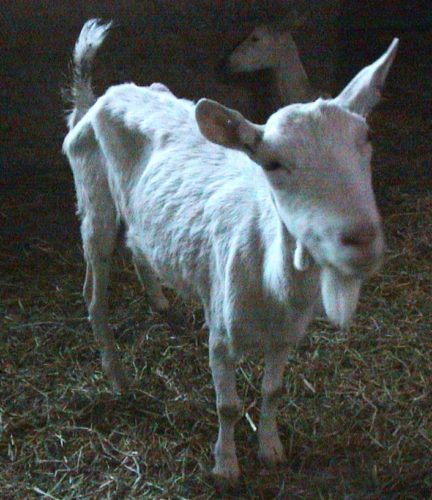Ovine Johne’s disease is a chronic (long-standing) disease of the intestine.
One of the biggest dangers when buying breeding livestock is that they can look completely normal, but can be carrying a deadly disease with huge financial implications for the unwitting buyer.
Paratuberculosis or Johne’s disease (pronounced “yoh-neez”) affects cattle, sheep, goats and certain wild animal species. The disease is of long duration and may cause diarrhoea and loss of mass in older (from 2 years on) animals. There is no treatment for diarrhoea.
The time before the disease becomes apparent in a herd varies from less than 6 months to several years (even up to 15 years). A very small percentage of the animals show clinical signs.
Symptoms of Johne’s disease
- Ovine Johne’s disease causes reduced weight gain, and steady loss of body condition and body weight leading to emaciation.
- It often causes scouring, especially in cattle and goats.
- This disease is incurable. Once signs appear death is inevitable within weeks or months.
- Treatments have no lasting effect on the course of the disease.
- Usually, infection occurs when the animals are very young.
- Infection lies latent and may flare up to cause obvious disease later in life.
- In cattle and sheep the signs of disease usually develop when the animals are middle-aged and the disease progresses over a period of months or years.
- In goats the signs can appear from about 8 months of age and they can develop quickly, causing death within weeks.
How is Johne’s disease spread?
The cause of OJD is a bacterium, Mycobacterium paratuberculosis.
The disease spreads when bacteria are shed in the faeces of infected animals, whether they have diarrhoea or not. The disease can spread from mother to young in the womb, and via her milk or as a result of faecal contamination of her udder when the baby suckles. An important feature of the disease is that animals are most susceptible to infection when they are young. It is likely that most infections occur in the first few weeks or months of life.
The sheep disease of the greatest concern in South Africa at present is ovine Johne’s disease (OJD), which can come into a flock by purchasing just one “normal” sheep.
According to the Ruminant Veterinary Association of South Africa (RuVASA) it is important to avoid the disease on your property if you keep sheep, for the following important reasons:
- It can be introduced to a flock by buying just one apparently healthy sheep;
- Once in a flock OJD is virtually impossible to eradicate;
- Being positive means eternal quarantine;
- Control rests on never-ending vaccination;
- Vaccination is very effective in lowering the impact of OJD but does not eliminate it;
- Left unmanaged, it can cause annual deaths of 10% or more of the breeding ewes.
Johne’s disease should not be confused with other conditions which also cause a loss of condition, including worm infestation, coccidiosis or malnutrition. In cattle the disease is similar to chronic fascioliasis and paramphistomiasis.

Johne’s disease is a controlled disease in terms of the Animal Disease Act (Act 35/1984). This means that if you discover the disease or suspect you have it on your smallholding you must report it to the State Veterinary Services.
Vaccine for Johne’s Disease
There is a vaccine for sheep and goats: Gudair Vaccine, made by Virbac. Smallholders may only purchase the vaccine if they have a prescription from a state veterinarian. It may only be used in infected herds under the direct supervision of a state veterinarian.
Owners usually use ear tags to permanently identify vaccinated sheep and goats.
Testing
If you are running a small flock as lawn mowers on your land, you probably will not want to go to the expense of testing all your sheep. However, if you are running a serious breeding programme it would be advisable to do so.
There is a Vendor Declaration Form available, which one can use when buying and selling sheep and goats. You can find a copy of it on the SA Smallholder website.
To read more on livestock click here.
To receive all our notices and each edition of SA Smallholder register here.

